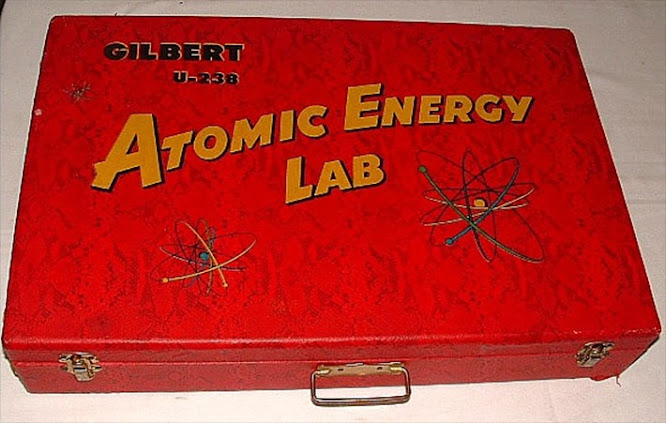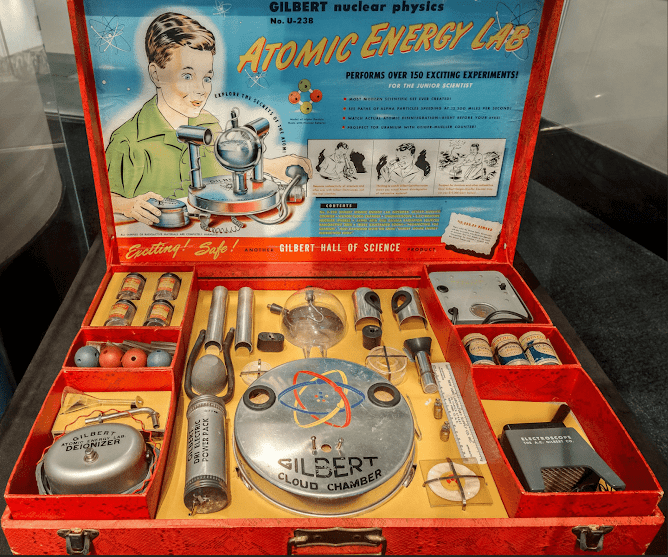A little history about Alfred Gilbert. First known as the Mysto Manufacturing Company, the company was founded in 1909 in Westville, Connecticut, by Alfred Carlton Gilbert, a magician, and his friend John Petrie, to provide supplies for magic shows.
Gilbert invented the Erector construction toy concept, first released by Mysto Manufacturing Company as the Mysto Erector Structural Steel Builder in 1911.
.
In 1916, the company's name was changed to "A.C. Gilbert Company."
Beginning in 1922, Gilbert made chemistry sets in various sizes and similar sets for other sciences.
Gilbert began making microscope kits in 1934. In 1938, Gilbert purchased American Flyer, a struggling manufacturer of toy trains, and Gilbert re-designed the entire product line, producing 1:64 scale trains running on an 'S' gauge track. At the same time, Gilbert introduced a line of 'HO' scale trains, primarily marketed under the brand name Gilbert HO.
After WWI, Gilbert released the Atomic Energy Lab in 1950. The kit allowed children to create and watch nuclear and chemical reactions using radioactive material. A line of inexpensive reflector telescopes followed the Sputnik-inspired science craze in the late 1950s.
The set originally sold for $49.50 ($540 today) and contained the following:
adding investigations into radioactivity in the 1950s with a kit featuring a Geiger counter and radioactive samples.
Gilbert began making microscope kits in 1934. In 1938, Gilbert purchased American Flyer, a struggling manufacturer of toy trains, and Gilbert re-designed the entire product line, producing 1:64 scale trains running on an 'S' gauge track. At the same time, Gilbert introduced a line of 'HO' scale trains, primarily marketed under the brand name Gilbert HO.
After WWI, Gilbert released the Atomic Energy Lab in 1950. The kit allowed children to create and watch nuclear and chemical reactions using radioactive material. A line of inexpensive reflector telescopes followed the Sputnik-inspired science craze in the late 1950s.
"Gilbert U-238 Atomic Energy Lab Kit."
The most dangerous toy in the world.
The set originally sold for $49.50 ($540 today) and contained the following:
- Battery-powered Geiger–Müller counter.
- Electroscope.
- Spinthariscope.
- Wilson cloud chamber.
- Four glass jars containing uranium-bearing ore samples (autunite, torbernite, uraninite, and carnotite from the "Colorado plateau region") served as low-level radiation sources of Alpha particles (Pb-210 and Po-210).
- Beta particles (Ru-106).
- Gamma rays (possibly Zn-65).
- "Nuclear spheres" for making a model of an alpha particle.
- Gilbert Atomic Energy Manual — a 60-page instruction book.
- Learn How Dagwood Split the Atom — comic book introduction to radioactivity.
- Prospecting for Uranium — a book.
- Three C batteries.
- 1951 Gilbert Toys catalog.



No comments:
Post a Comment